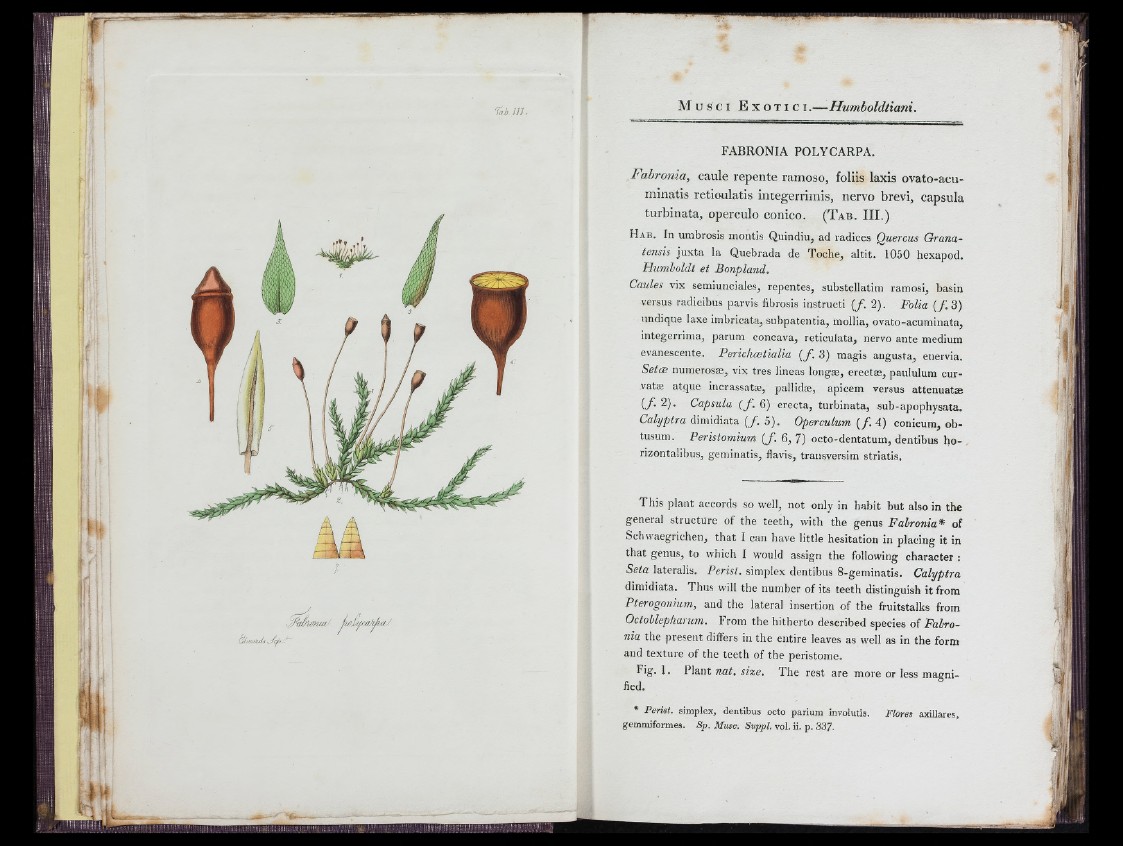
A
i'f
j'V
FABRONIA POLYCARPA.
F a b ro n ia , c au le re p e n te ram o so , foliis laxis o v a to -a cu -
m in a tis re tio u la tis in te g e rrim is , nervo brev i, cap su la
tu rb in a ta , o p ercu lo con ico . ( T a b . I I I . )
H a b . In umbrosis montis Quindiu, ad radices Quercus Grana-
tensis juxta la Quebrada de Toche, altit. 1050 hexapod.
Hiimholdt et Bonpland.
Caules vix semiunciales, repentes, substellatim ramosi, basin
versus radicibus parvis fibrosis instructi ( / . 2). Folia ( / 3 )
nndique laxe imbricata, subpatentia, mollia, ovato-acuminata,
integerrima, parum concava, reticulata, nervo ante medium
evanescente. Perichcetialia ( / . 3) magis angusta, eiiervia.
SetcB números», vix tres lineas long», erectas, paululum curvata;
atque incrassata;, pallid», apicem versus attenuatae
{ f. 2). Capsula ( f . 6) erecta, turbinata, sub-apophysata.
Calyptra dimidiata ( / . 5). Operculum ( / . 4) conicum, ob-
tusum. Peristomium ( / . 6, 7) octo-dentatum, dentibus ho-
rizontalibus, geniinatis, flavis, transversim striatis.
This plant accords so vrell, not only in habit but also in the
general structure of the teeth, with the genus Fahronia* of
Schwaegrichen, that I can have little hesitation in placing it in
that genus, to which I would assign the following character :
Seta lateralis. Perisl. simplex dentibus 8-geminatis. Calyptra
dimidiata. Thus will the number of its teeth distinguish it from
Pterogonium, and the lateral insertion of the fruitstalks from
Octohlepharum. From the hitherto described species of Fabronia
the present differs in the entire leaves as well as in the form
and texture of the teeth of the peristome.
Fig. 1. Plant nat, size. The rest are more or less magnified.
* Ferht. simplex, dentibus octo parium involutis.
gemmiformes. Sp. Muse. Suppl. vol. ii. p. 337.
Flores axillares.